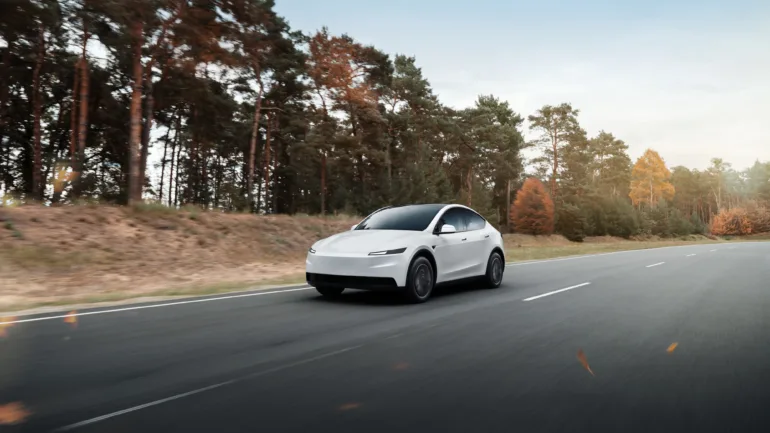Tesla has done what any business consultant would call a rational decision with its new Model Y Standard. It has simplified the offering, reduced the complexity of production and expanded the accessibility of its best-selling electric icon. The base Model Y Standard now costs €39,900, while the next level – Long Range Premium – costs €49,900. In one fell swoop, the mid-range versions, which offered a smaller battery but premium equipment, have disappeared from the range at around €44,900.
On paper, this works flawlessly. Fewer variants mean lower costs. A wider price range means potentially higher profits. Elon Musk is clearly convinced that the automotive market can be convinced by mathematical economic logic: if the difference between two models is not too great, most people will choose the more expensive one, thus increasing the average sales value. But cars are not sold in Excel. They are sold in the stomach, in the feeling you get when you get behind the wheel, in the look of a passerby who turns to look at you for a moment.

Tesla He doesn't understand his problem here. He hasn't for a long time. Model Y Premium, the one that is supposed to be “better”, is not really premium. It is efficient, quiet, completely digitalized – and emotionally empty. The interior is sterile as an operating room, the exterior is devoid of tension, without that visual charge that takes your breath away. It does not resemble luxury, but the engineering purity that Musk has elevated to a religion. This is aesthetics of autistic functionality, formed by human hyperfocus, who can build a rocket, but not seduce hearts.
And then comes the Model Y Standard. A car that could simply be a cheaper alternative becomes a mirror of Tesla's inability to understand human desire. The problem isn't the price—the problem is that this cheaper model looks cheaper. You can recognize it from afar: smaller rims, fewer details, a different stance, less confidence. Where the compromise should be imperceptible, it becomes visible. If at The Model 3 base and premium versions perform almost identically, at The Model Y screams difference. And in the automotive world, where symbols are everything, this is not an innocent mistake.

Tesla created this two-tier system of owners – those who can afford it the real Tesla, and those who drive its approximation. But those others will feel the difference every time they park. Not because they lack equipment, but because they will feel like their own car is betraying them. No one wants a car to explain how much it cost. Let your car explain who you are.
Musk's logic of rationality breaks down to a simple psychological law here: People buy cars out of a desire for belonging and validation, not calculation. Tesla, once seen as a status symbol of the future, now risks becoming a brand of compromise. This is not a problem of economics, but of emotion.
In Europe, cars are bought with their eyes. At a price of around 40,000 euros, people are not buying mileage, but a story, a character, a sense of uniqueness. If Tesla offers a car that visually communicates: “I saved money,” then it is no longer a premium brand, but a rational device. And the problem with rational devices is that no one dreams of them.

Here is the essence of the paradox: Elon Musk builds a company of the future, but creates cars that are emotionally from the past – without soul, without fire, without that little irrationality that makes driving a beauty and not a chore. Tesla fails not because it is technically bad, but because it forgets that a car is not a product. It is a work of art in motion.
If I were Model Y Standard If Tesla had looked the same as its more expensive sibling, this column wouldn't exist. People would say, "I got the smart version." And so, with every "basic" version sold, Tesla inadvertently announces its descent into mediocrity. And that's ironic - a company that built its identity on being different is now losing its magnetism precisely because it wants to be too rational.

Tesla is not suffering from competition today. He suffers from a lack of poetry. And if she continues to believe that the future of motoring is simply the result of a good price, an efficient battery, and a perfect, flawless design, then she will find that people are capable of buying anything – except a car without a soul.






